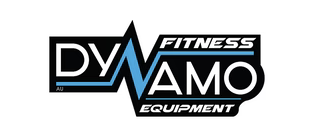Reformer Guide
Body Athletica’s guide to buying or renting a reformer.
When it comes to purchasing a reformer, personal preferences and specific needs should guide your decision. The type of reformer that suits you best depends on several factors:
Determining your budget is crucial when purchasing a Pilates reformer.
- The cost of reformers varies significantly, ranging from a few hundred to $10,000. The price often reflects the quality of the equipment, so it’s important to consider the materials used, construction, and durability.
- Additionally, you may need to factor in the cost of accessories that are not included with the reformer, such as a box, straps, springs or resistance bands, and head cushions. Carefully research the availability and prices of these accessories to ensure they fit within your budget.
- It’s also prudent to inquire about the cost of replacing components like springs. The manufacturer’s recommended replacement schedule for these parts can impact your long-term expenses.
- By considering both the initial cost and ongoing maintenance expenses, you can make an informed decision that aligns with your financial resources and ensures a fulfilling Pilates experience.
Commercial vs Personal Use
The suitability of a reformer for personal home use or commercial use depends on its design and intended purpose.
- Reformers designed for commercial applications are typically more robust and durable, engineered to withstand the frequent and intense use by multiple clients. Their construction and materials are built to handle the demands of continuous commercial operation, ensuring longevity and reliability in demanding fitness environments. On the other hand, reformers intended for personal home use may prioritize comfort, portability, and affordability.
- While they may be suitable for individual workouts, they may not possess the same level of durability and longevity as commercial-grade reformers. The choice between a personal home use or commercial reformer should be guided by the intended frequency and intensity of use, as well as the desired features and budget considerations.
Mobility Requirements
If the reformer will be permanently placed in a designated area, a heavy-duty reformer with a traditional wooden frame can be an excellent choice.
- These reformers offer a comfortable and stylish design but require multiple individuals to move due to their weight.
For reformers that need to be moved regularly, consider lightweight options made of metal or collapsible models.
- Metal reformers may be less expensive but can compromise on durability. Collapsible reformers can save space and are suitable for environments where multiple activities share the room.
Functionality
A functional Pilates reformer should possess various essential elements to cater to diverse client needs and ensure effective and safe exercise sessions.
- Firstly, an adjustable headrest inclination allows for customized support, particularly beneficial for clients experiencing neck pain. An elevated design off the floor enhances exercise versatility, enabling exercises like Scooter to be performed with ease.
- A comprehensive range of resistance options, from light to heavier springs, provides flexibility in tailoring exercises to clients of varying fitness levels.
- Furthermore, the presence of stoppers ensures safety by preventing the carriage from overextending.
- Lastly, an adjustable pulley height allows for modifications in exercise intensity and accommodates clients of different heights, ensuring optimal exercise execution and personalization.
Who are your clients?
When selecting a Pilates reformer, the type of clients being taught must be considered.
- Elderly or injured clients may struggle with getting up and down from a low reformer, so a traditional reformer, which is higher off the ground, is more suitable.
- Traditional reformers also provide greater stability and are ideal for heavier clients, while metal reformers may be less stable and wobbly.
- For athletes and taller individuals, traditional reformers with longer dimensions and stronger spring resistance are preferred for advanced exercises.
- Additionally, clients with neck pain benefit from traditional reformers with adjustable pulley heights, as a low pulley height can strain the Upper Trapezius during arm exercises.
- By carefully considering the needs of the specific clientele, instructors can choose the most appropriate reformer for optimal results and safety.

Dynamo Fitness Equipment is an Official Body Athletica Partner.
Australian Partners
DYNAMO FITNESS EQUIPMENT
PEAK PILATES
YOUR REFORMER
ALIGN PILATES
BA Students get 12% off with code BodyAthletica12 when purchased via phone or email.
ONE HOT YOGA
LOPE PILATES
Get 10% off with code BA10
PILATES WORLD
THE PILATES SHOP
Ba students get 10 off with code BodyAthletica10
PILATES ON POINT
BA students get 20% off monlthy rental
